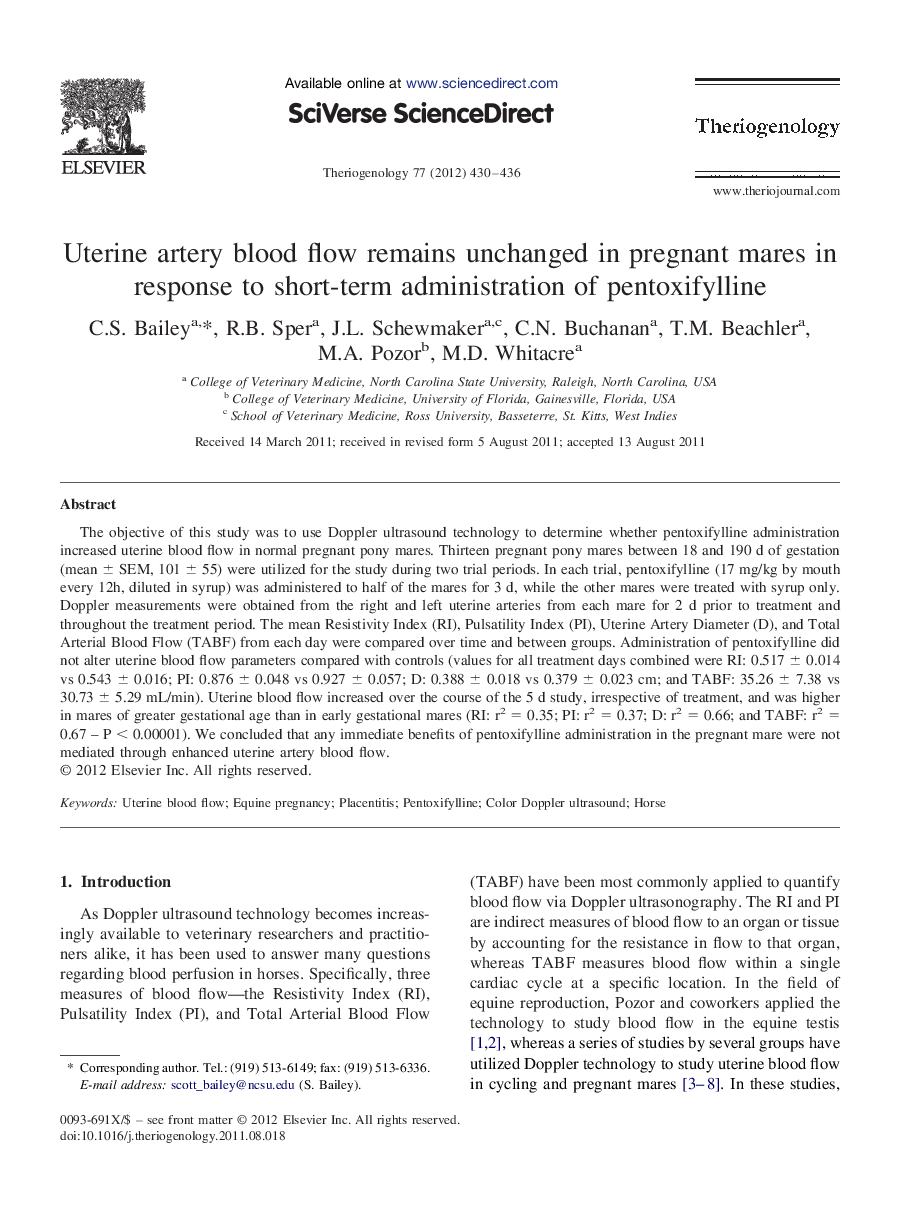| Article ID | Journal | Published Year | Pages | File Type |
|---|---|---|---|---|
| 2095349 | Theriogenology | 2012 | 7 Pages |
The objective of this study was to use Doppler ultrasound technology to determine whether pentoxifylline administration increased uterine blood flow in normal pregnant pony mares. Thirteen pregnant pony mares between 18 and 190 d of gestation (mean ± SEM, 101 ± 55) were utilized for the study during two trial periods. In each trial, pentoxifylline (17 mg/kg by mouth every 12h, diluted in syrup) was administered to half of the mares for 3 d, while the other mares were treated with syrup only. Doppler measurements were obtained from the right and left uterine arteries from each mare for 2 d prior to treatment and throughout the treatment period. The mean Resistivity Index (RI), Pulsatility Index (PI), Uterine Artery Diameter (D), and Total Arterial Blood Flow (TABF) from each day were compared over time and between groups. Administration of pentoxifylline did not alter uterine blood flow parameters compared with controls (values for all treatment days combined were RI: 0.517 ± 0.014 vs 0.543 ± 0.016; PI: 0.876 ± 0.048 vs 0.927 ± 0.057; D: 0.388 ± 0.018 vs 0.379 ± 0.023 cm; and TABF: 35.26 ± 7.38 vs 30.73 ± 5.29 mL/min). Uterine blood flow increased over the course of the 5 d study, irrespective of treatment, and was higher in mares of greater gestational age than in early gestational mares (RI: r2 = 0.35; PI: r2 = 0.37; D: r2 = 0.66; and TABF: r2 = 0.67 – P < 0.00001). We concluded that any immediate benefits of pentoxifylline administration in the pregnant mare were not mediated through enhanced uterine artery blood flow.
